06 Feb My Drape Pattern Making Method
The origins of my passion for creative pattern making start way back in 1980 when I first went to fashion college. It was at this time that I was introduced to an amazing pattern making book that just lit up my brain. Natalie Bray’s technical diagrams leapt off the page and made immediate sense to me. I could hardly contain my excitement at the potential of pattern making. To this end I believe I was quite the pesky student in our pattern making classes. The student with 20 questions every session, that drove the pattern making teacher crazy. You’ll find Natalie’s books on all the usual book selling sites and the prices vary dramatically, so do your research.
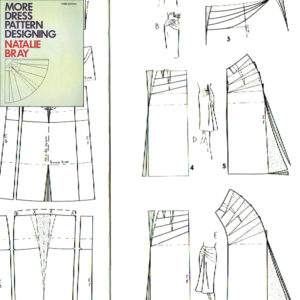
During my time at college I focussed mostly on more tailored items. And for a girl from sub-tropical Queensland, I had quite the passion for woollen fabrics and the potential they have for moulding and shaping. Go figure! The images below are from my college days. On top – me working on my collection circa. 1982. And below a couple of photos, of my good friend Joanne modelling some of my college designs that I re-discovered, in the recent house move.
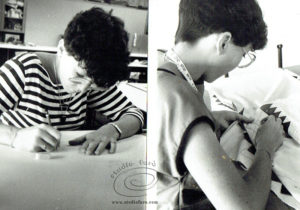
What is evident in these images is the emphasis in our college program on creative embroidery and appliqué. The two-piece suit on the left is a natural silk that I dyed in the bath at home; both the base colour and the appliqué colours. The outfit on the right is unfortunately black and not at all revealing of a design that included black leather worked into the locally sourced black wool. Just prior to starting my final collection I made a trip to a woollen mill near Toowoomba, just outside Brisbane, Queensland and bought an entire garbage bag of assorted woollen fabrics for just $70 that I used to make all of my final collection pieces.
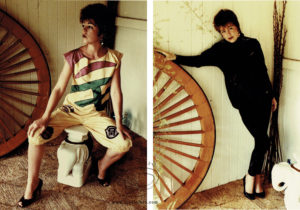
My professional career did little to utilise this creative design and pattern making drive. So much of what we do in the commercial world is far more straight forward and trend-driven. It places a great demand on technical excellence in product development that makes sure a garment gets through the production process with the minimum of issues and arrives in the shop in a condition that meets consumer expectations.
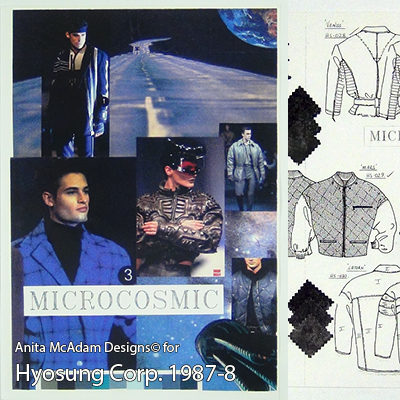
It was only when I returned to Australia that I found the opportunity to delve into this creative world of design and pattern making. And this happened when I started teaching my own style of patternmaking classes at my St Peters studio in Sydney (circa. 2004). Such a big and beautiful space. I actually had five pattern making tables and four industrial sewing machines.
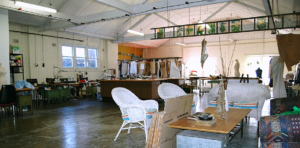
The sketches below from early 2002 are the very first evidence of my desire to push the technical boundaries of flat pattern making into something far more creative and elegant. And for those of you familiar with my blog you’ll see how the drape sketched here features in so many of my pattern puzzle designs.
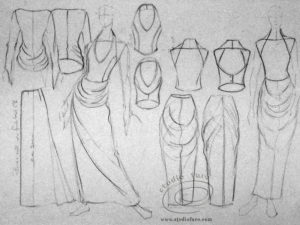
Essentially what’s happening in all these designs is dart transfer to drape as you see in the excerpt from Natalie Bray’s book at the top of the post. So if you begin with a well-fitted block (skirt or dress) and transfer all the darting into drape then the fit of your final design will be the same as your block toile, only more interesting. It’s a combination of dart transfer and slash and spread techniques where more fabric is needed to achieve the final design. I believe the best diagram I’ve made in my pattern puzzle posts, to illustrate this process, are those that belong to the Classic Drape Dress.
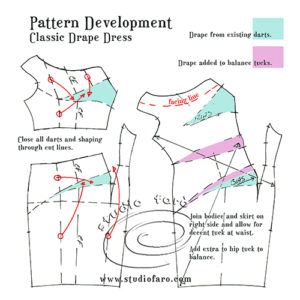
The diagrams on the left show the effect of folding out (transferring) all existing darts in the fitted dress block into the drape lines drawn on the original dress block. On their own, they do not produce enough drape of equal effect to finish this dress pattern. In order to develop balance in the draped tucks in the final design, I then add more drape (fabric) to even up the tucks. That’s the slash and spread part of the pattern making.
These designs and the patterns that come from them are always challenging and will need at least two toiles to get anywhere near the desired effect. For the most part there is nothing new in the method I use to make my drape patterns. Perhaps what is novel in my approach is that I practice this method on recent and original design ideas. A good number of our favourite pattern books are vintage at the very least and don’t feature many ideas that appeal to today’s fashionistas.
In essence, it’s a combination of creative design that’s informed by a good understanding of what is possible in creative pattern making. I do hope this blog post is in some way useful to all you budding pattern makers. Please feel free to ask your questions in the comments section below or in my Facebook group – STUDIO FARO MAKERS.
Take this moment to sign up for my fabulous newsletter! Every month or so I send an email newsletter with new website content and always, always an enormous discount code for all my sewing patterns, garment blocks and pattern making instructions.
This discount code is for subscribers only. Don't miss out!
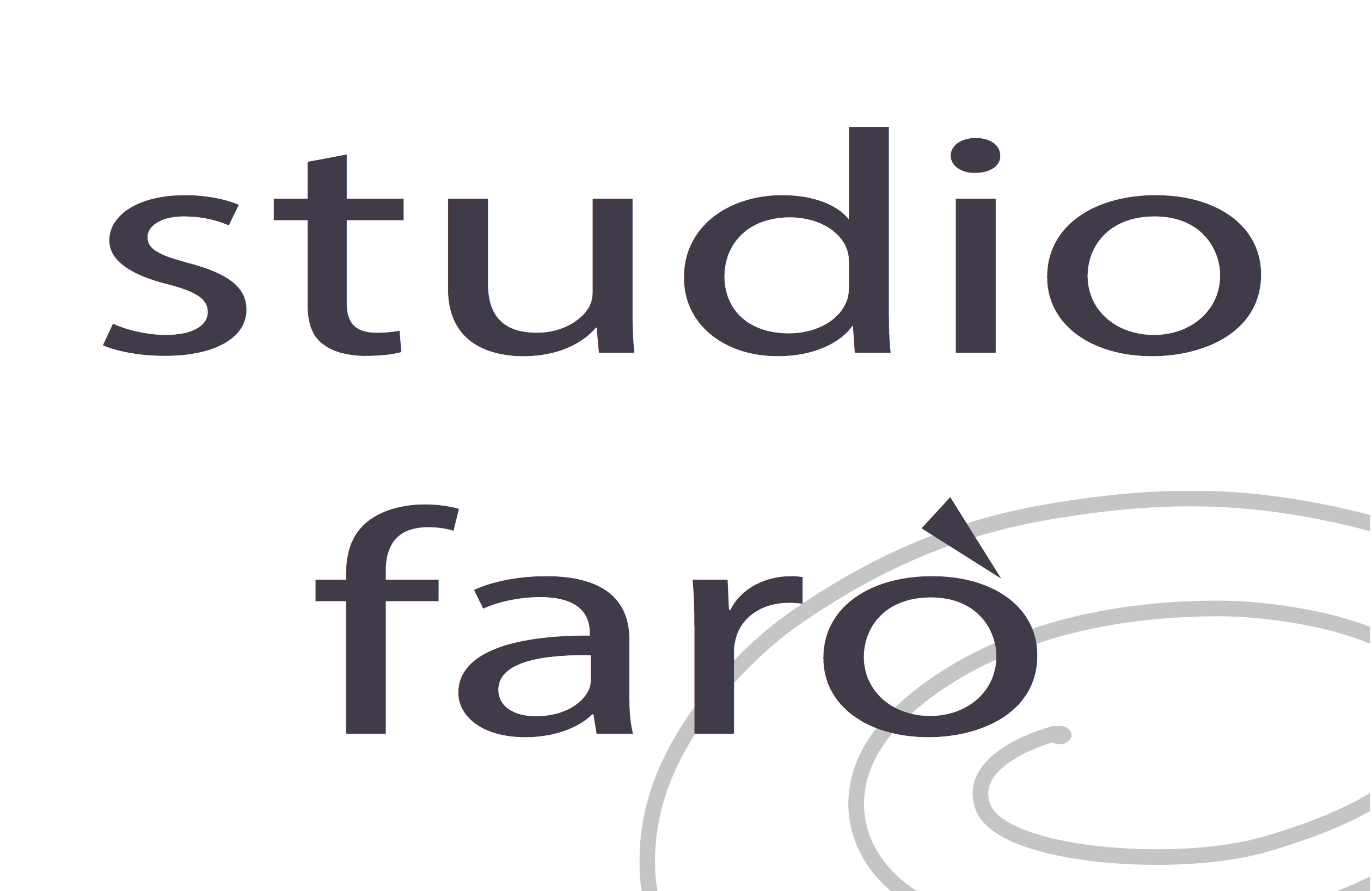
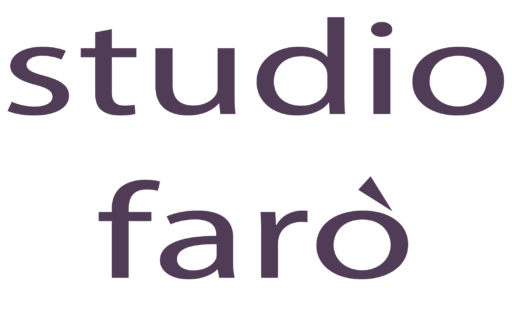
No Comments